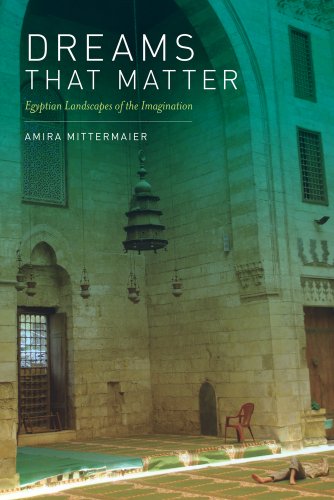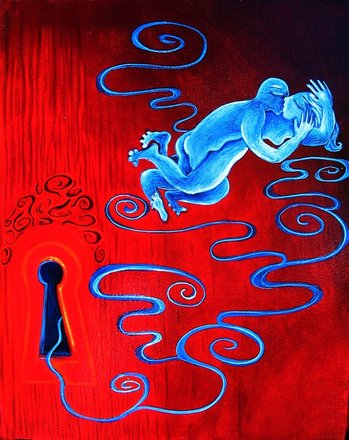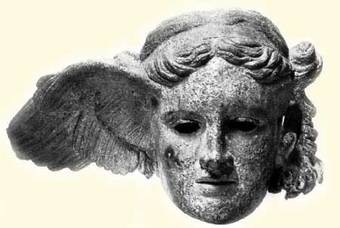 I am reading a wonderful contribution to the anthropology of the imagination by Amira Mittermaier, a professor of religion at the University of Toronto. She has spent many years studying the way that Egyptians today dream and interpret dreams and invite visions and visitations. The result is her book Dreams that Matter: Egyptian Landscapes of the Imagination. As we strive to understand news of the current struggles in Egypt, she takes us into realms that are rarely reported. Her book is of the highest importance not only for those of us who want to understand the culture of dreaming in Egypt and the Islamic world, but as the model for a fresh approach to the study of imagination in human societies.
I am reading a wonderful contribution to the anthropology of the imagination by Amira Mittermaier, a professor of religion at the University of Toronto. She has spent many years studying the way that Egyptians today dream and interpret dreams and invite visions and visitations. The result is her book Dreams that Matter: Egyptian Landscapes of the Imagination. As we strive to understand news of the current struggles in Egypt, she takes us into realms that are rarely reported. Her book is of the highest importance not only for those of us who want to understand the culture of dreaming in Egypt and the Islamic world, but as the model for a fresh approach to the study of imagination in human societies.
Based on her travels and interviews with Sufi shaykhs, Cairo psychologists and ordinary Egyptian dreamers in every walk of life, Mittermaier gives us a fascinating account of Islamic methods of dream incubation as practiced in Egypt today. Let’s notice that in traditional Islamic dream interpretation, dreams are assigned to three broad categories: dreams inspired by devils or jinn, which should be spat out; dreams that merely reflect the wanderings and cravings of the low self, or nafs; and the true dream-vision, ru’ya, that is a source of clear guidance and blessing.
There are ways of inviting the desirable true dream, or ru’ya. One is to pray for a dream through the formula that is called istikhara, which literally means “seeking the best”. In principle, guidance is to be sought in this way only when you are torn between two choices, both permissible in terms of ethics and religion. The process is that you pray to God not only to show you the right course of action but to facilitate it, if it is good, and to turn it away if it is not. In a version of the prayer given by Mittermaier, the dream-seeker asks God to “turn it away from me and turn me away from it” if a contemplated action is “detrimental in my religion, worldly life and ultimate destiny.” How many times can you ask for dream guidance in this way on a given theme? Here people differ. Some people put their question three nights in a row, and cobble together the dreams they receive. Some get their message, with absolute clarity, on the first night. One shaykh says it’s okay to go on asking – if in doubt – for a whole month.
In the lives of contemporary dreamers, this ancient form of prayer is used to seek guidance on matters large and small, from changing jobs to changing shaykhs to changing shoes. It is especially popular with women trying to decide whether a potential husband is the right guy or not.One of Mittermaier’s stories is of a young woman who dreamed of threatening storm clouds after praying for a dream – and promptly nixed the engagement her suitor had been trying to arrange with her family. He later turned out to be a rogue. Can’t help wondering how many in Egypt today – near or far from the centers of power – have been looking for clarity in this way.

